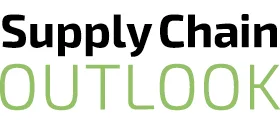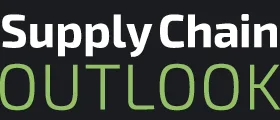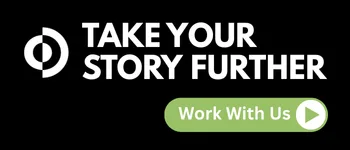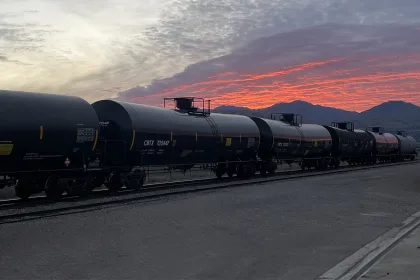Craig Geskey, Vice President of Strategic Growth for leading supply chain transformation organization, TRAFFIX, outlines how choosing partnership over procurement in today’s fast-evolving logistics landscape can lead to a level of unrivalled coordination, alignment, and reliability.
WHY PARTNERSHIP OUTPERFORMS PROCUREMENT
Where procurement can move freight, partnership can move performance. Where procurement buys a service, partnership builds a solution that delivers outcomes.
Most supply chains operate with two currencies – price and availability. Yet, the companies that consistently outperform their markets have learned to work with a third: collective accountability toward a common goal.
Partnership creates alignment that purchasing alone cannot. It transforms a transaction into a shared commitment that strengthens the entire network.
Across North America, volatility is reshaping transportation. Capacity swings, labor scarcity, new regulatory pressures, and the next wave of nearshoring all demand resilience, not rapid bidding.
In this climate, the companies that invest in true partnerships gain an advantage that cannot be commoditized – control.
In this way, partnership is not a contract; it is coordination at scale.
BUILD FOR RESILIENCE, NOT FOR ROUNDS
Procurement cycles reward short term savings and partnerships reward long term stability. The difference becomes clear the moment the market shifts.
When demand surges, bidding rounds lose effectiveness, price discovery turns into price chasing, and every hour spent on re-quoting is an hour not spent moving product.
Partner carriers behave differently, planning ahead with you. They bring insights on lane behavior, regional risks, and capacity signals that purchasing alone cannot surface, treating your freight as committed volume rather than a temporary transaction.
Procurement tends to stay transactional, but partnership becomes transformational when both sides commit to shared performance, not just shared quotes.
The strongest operators work with a core group of partners and align their forecasts, cut-offs, yard operations, and service expectations regularly, creating predictable cadence in an unpredictable market.
When both sides prepare for the same future, service interruptions decrease, and recovery time becomes measurable rather than hopeful.
- Targets: Engage in quarterly alignment sessions, maintain at least 70 percent of volume with strategic partners, and stabilize tender acceptance above 95 percent.
- Avoid: Do not fragment volume across too many suppliers. Fragmentation destroys the scale that makes collaboration possible.
CAPACITY AS A STRATEGIC ASSET
Capacity is more than equipment – it is access, responsiveness, and continuity.
While procurement secures today’s truck, partnership secures tomorrow’s.
Strong partners do more than accept loads. They structure fleets, staffing, and drop trailer positions around your patterns, and work with real data instead of historical assumptions.
They protect your volume during tight markets because they understand how it connects to their own stability.
As such, partnerships turn capacity from a purchased service into a shared investment.
It transforms the question from ‘who is cheapest today?’ into ‘who can keep me moving when the market tightens?’
This shift unlocks space for strategic planning, and drop trailer programs, after-hours support, facility flow improvements, regional surge plans, and border consistency all become possible only when a partner has enough visibility to plan forward.
- Targets: Maintain a minimum buffer capacity during seasonal peaks and align service commitments with verified operational capability.
- Avoid: Do not let price volatility dictate carrier rotation – constant switching erodes every advantage that consistent capacity provides.
INFORMATION IS THE FUEL
Partnership accelerates visibility – procurement delays it.
When transportation is managed as a transaction, data flows become fragmented – each player only holds partial truths.
By contrast, partnerships create open lanes of information – better data, clearer exceptions, more accurate estimated times of arrival (ETAs), and network-wide trends that turn information into intelligence.
Shared visibility is what gives both sides the ability to act instead of react. When a partner sees your dwell increasing, they can shift assets before a backlog develops, and when they see a customs delay building, they can prevent a domino effect across a week of schedules.
Information reduces friction: friction reduces performance. The companies that share data with intention create a system where every hour is used to increase control, not repair surprises.
- Targets: Implement shared dashboards with real-time updates and ensure all exceptions are classified by type within 24 hours.
- Avoid: Do not limit information access to end reports: final outcomes hide early warning signals.
ALIGN PEOPLE TO PURPOSE
Partnerships outperform procurement because people act with purpose, not obligation.
When teams understand your network, cut-offs, and customer commitments, every decision they make becomes more precise, planning routes with more accuracy, dispatching with more context, and escalating sooner because your business is not a stranger to them.
Shared accountability changes behavior – dock teams begin to pay closer attention, dispatch teams communicate proactively, and leadership teams remove friction instead of negotiating blame.
This cultural alignment cannot be bought through a bidding event – rather, it is earned through consistent collaboration, joint reviews, and clear definitions of who owns what across every stage of the supply chain.
- Targets: Establish escalation paths with a maximum response time of 15 minutes and complete role alignment across both organizations at least once a year.
- Avoid: Do not assume frequency of interaction equals clarity; even experienced teams drift without defined expectations.
MEASURE THE RELATIONSHIP, NOT ONLY THE RATE
Great partnerships are built on measurable performance, not sentiment, assumptions, or contract language.
Where procurement focuses on the final cost, partnership focuses on the total impact: dwell, tender acceptance, recovery time, exception frequency, lane variability, appointment adherence, and predictive planning accuracy.
Procurement often reduces spending in the short term, but partnership reduces total cost by preventing the failures, delays, and exceptions that drive true expense.
The strongest shippers run monthly performance reviews with their partners, comparing trends, eliminating root causes, and creating joint improvement plans. They treat transportation as a living system instead of a list of transactions.
This alignment transforms the relationship into a performance engine where everyone sees the same data, commits to the same direction, and ultimately wins together through clarity.
- Targets: Track exceptions per hundred loads, stabilize dwell under 24 hours, and reduce repeated lane issues to zero.
- Avoid: Stop rewarding the lowest rate without analyzing its operational cost – savings disappear when service falters.
STRATEGIES YOU CAN ACTIVATE NOW
Strengthening partnership begins with structure. These actions create immediate impact:
- Define shared service expectations and the consequences for missed commitments.
- Introduce unified data standards for drivers, plates, ETAs, documents, and exceptions.
- Create incentives that reward stability and collaboration from both sides.
Partnership is a choice – it is the decision to trade volatility for alignment and firefighting for foresight.
When companies move with their partners instead of around them, every network becomes stronger, and every customer promise becomes more predictable.
QUICK WINS TO START TODAY
- Launch a shared dashboard within two days.
- Confirm the next weeks and months of committed volume with your partners.
- Publish escalation paths and ensure both teams acknowledge them.
In the end, the market rewards consistency, and partnership is the engine that creates it.
Procurement buys service. Partnership builds reliability.
The companies that embrace partnership will define the next era of supply chain performance across North America.
At TRAFFIX, we work side by side with shippers to build networks that are predictable, resilient, and aligned with their goals.
Our teams in the US, Mexico, and Canada move together as one to deliver performance that lasts.


























